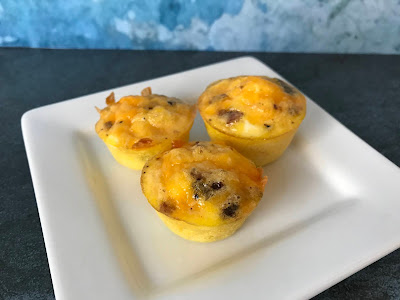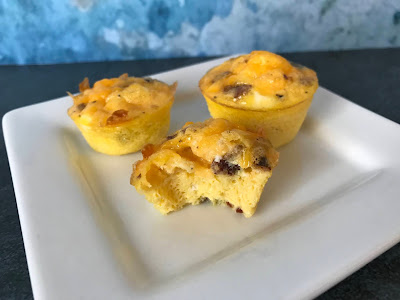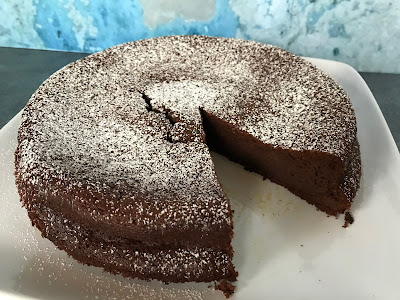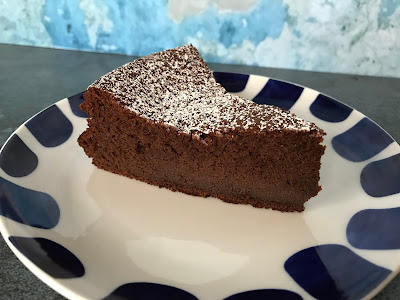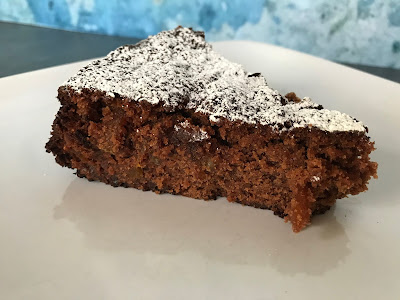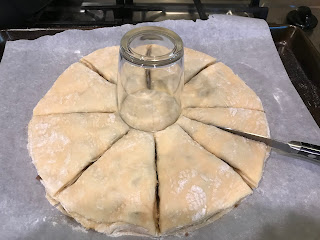Wednesday, March 31, 2021
Keto Sandwich
Monday, March 29, 2021
Boulettes de poulet teriyaki
J’ai essayé une autre recette de Jessica Seinfeld, celle de son poulet crémeux avec une sauce au chou-fleur et à la patate douce – honnêtement, ce n’était pas fameux. Je me demandais quelles autres recettes du même genre je pourrais faire, et tout d’un coup, je me suis souvenue du commentaire de mon amie la Maman des Zigotos sur ce billet avec ses boulettes de bœuf contenant des pommes et des oignons, où elle me disait qui avait créé la recette… Donc je suis allée voir, et c’était Annabel Karmel, une Australienne qui se spécialise dans les recettes santé pour jeunes enfants. J’ai ensuite jeté un coup d’œil à ses livres de cuisine et, inspirée, j’ai acheté d’abord Real Food Kids Will Love. J’ai commencé par ces boulettes de poulet teriyaki.
Thursday, March 25, 2021
Honey Whole Wheat Chocolate Chunk Cookies
I tried another kind of chocolate chip cookie, because why not. The original recipe, honey whole wheat chocolate chunk cookies, called for whole wheat bread flour, but I’ve never been able to find it in stores. (I mean, I *could* get it online as long as I want like 20 pounds of it, but I’m not running a restaurant!) So I used white whole wheat flour instead, and Hu dark chocolate gems in lieu of chocolate chips or chopped chocolate.
Bacon-Cheddar Mini Frittatas
I originally made these bacon-cheddar mini frittatas for the Little Prince’s lunch box. It turns out that while he likes them, he would prefer them as a side than as a main. The Fox, however, was crazy about them! This was particularly pleasing, given that he’s been very picky lately. I increased the amounts, below, to make 24 mini frittatas; I haven’t tried it, but I believe these would freeze well. They’re good warm or cold.
Tuesday, March 23, 2021
Chocolate Buckwheat Cake
I found this chocolate buckwheat cake quite unusual in that it is made with a yeast sponge. In fact, the sponge and whipped egg whites are what hold it together, as it is gluten-free. It is pleasantly dense, and I think there’s a range of “ready” textures – from slightly fudgy for a lesser baking time to more crumbly for a longer one. This was a hit with my family!
Monday, March 22, 2021
Moroccan-Style Beef with Couscous
My friend Jen shared this recipe on Facebook, and it REALLY hit the spot for me. I changed it a bit by increasing the amount of carrots and couscous and doubling the amount of meat, because I didn’t think that 1 pound of meat could really feed 6 people – I ended up with too many leftovers, but I regret nothing! Next time, I would use 1 pound of meat, but still increase the amount of carrots, and double the couscous to make two meals for our family. I’m definitely making this again, it was delicious!
Sunday, March 21, 2021
Marmalade Cookies
When I made Meyer lemon marmalade, I hadn’t sterilized my jars, so I knew I had to use it up relatively quickly. I used some to top very good buttermilk waffles, so with that and regular use (topping toast), plus topping yogurt once, almost a jar was accounted for.
Saturday, March 20, 2021
Brioche étoilée à la cannelle
Cette recette de Coup de Pouce n’est malheureusement pas en ligne, mais j’ai trouvé que ça valait la peine d’être partagé! C’était la page couverture de leur numéro de Noël 2020. Elle était plus simple à préparer qu’elle en a l’air et elle a fait fureur. Le Petit Prince trouvait que ça avait plus l’air d’une fleur que d’une étoile, et pourquoi pas? Nous avons tous beaucoup aimé. Je pense que ce serait également délicieux avec une tartinade au chocolat à la place de la garniture à la cannelle – j’dis ça, j’dis rien…
Friday, March 19, 2021
Mini-pâtés au porc effiloché et à la patate douce
Saturday, March 13, 2021
Batch of links
Friday, March 12, 2021
Cranberry Curd Bars
I made cranberry curd bars not long ago. Even though it’s a dish that feels more wintery, we have frozen cranberries year-round, so there’s really no good reason not to make this anytime! I’ll admit it wasn’t quite as good as the cranberry lime pie, but since my kids rarely like pies or tarts, I thought that bars would be a better bet. (Sadly, I was wrong.) The cranberry curd was fine, but the crust was too hard for us, even though I actually baked it less than called for – I’d make a regular shortbread crust next time, but I can’t think of a good sample recipe off the top of my head. At least it helped me use up the walnuts in my pantry!
Saturday, March 06, 2021
Risotto dessert poire et chocolat blanc
Cette recette vient de Coup de Pouce. Je pense qu’ils utilisent le terme « risotto » plutôt que « pouding au riz » pour faire plus chic, mais on s’entend que ça s’équivaut! L’Ingénieur et moi avons beaucoup aimé, mais j’ai trouvé que la muscade prenait le dessus et qu’on ne goûtait pas du tout le chocolat blanc, ce qui était dommage. La prochaine fois, je vais essayer ¼ c. à thé de muscade pour 4 oz de chocolat blanc. Les quantités ci-dessous donnent 4 portions.
Thursday, March 04, 2021
Thai meatballs
I saw this recipe for Thai beef skewers with basil salad in a magazine and decided to adapt it a little. I made meatballs instead of skewers and cooked them in the oven instead of grilling them; I used more beef; I used less basil in the salad because it would have been overpowering to me; and I served it with rice with gomashio. I would recommend using only 3 teaspoons of fish sauce for 2 pounds of meat, because fish sauce is very pungent and I notice that most recipes call for slightly too much for my taste. As it was, though, the Little Prince had seconds, the Fox eventually agreed to taste them and then ate some, and The Engineer and I really liked it too!
Wednesday, March 03, 2021
Chocolate Pancakes
I made a few dishes that were close to pancakes: serabi (which I found delicious with a non-traditional raspberry sauce), then on Candlemas I made buckwheat crepes (which, sadly, I don’t recommend) along with a double batch of my uncle’s crepes for dessert, but decided that it won’t be my go-to crepe recipe after all. (For more about Candlemas and its link to crepes, see here or here; it turns out that Groundhog Day has its origins in Candlemas, though why the Americans left behind the crepes for dinner is beyond me – that’s the best part!) And there’s the pandekager I never wrote about – they’re essentially Danish pancakes with cardamom and lemon zest. Really good!









